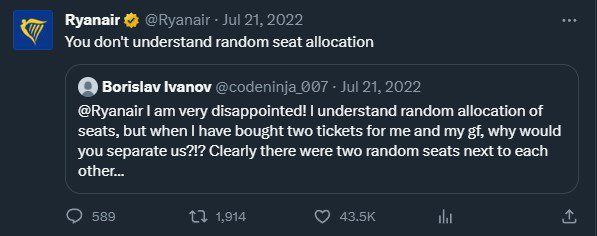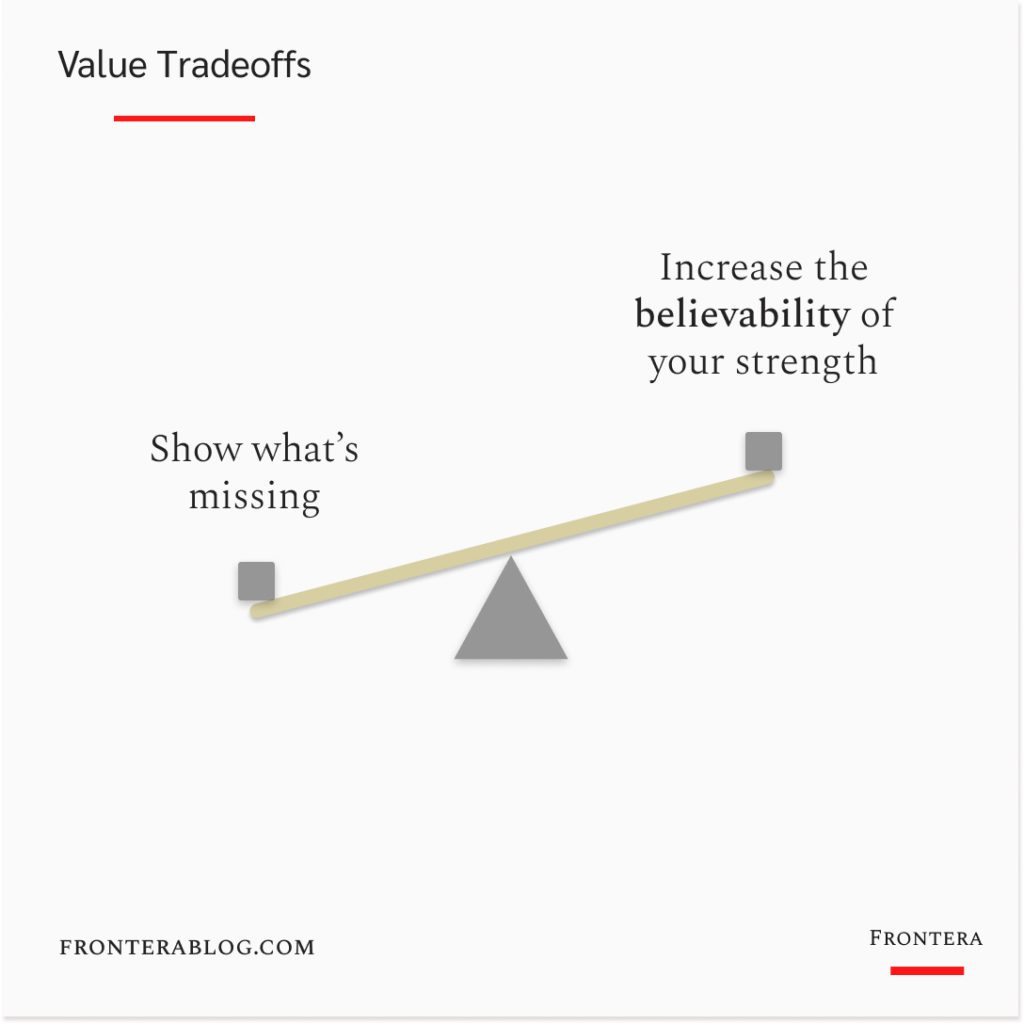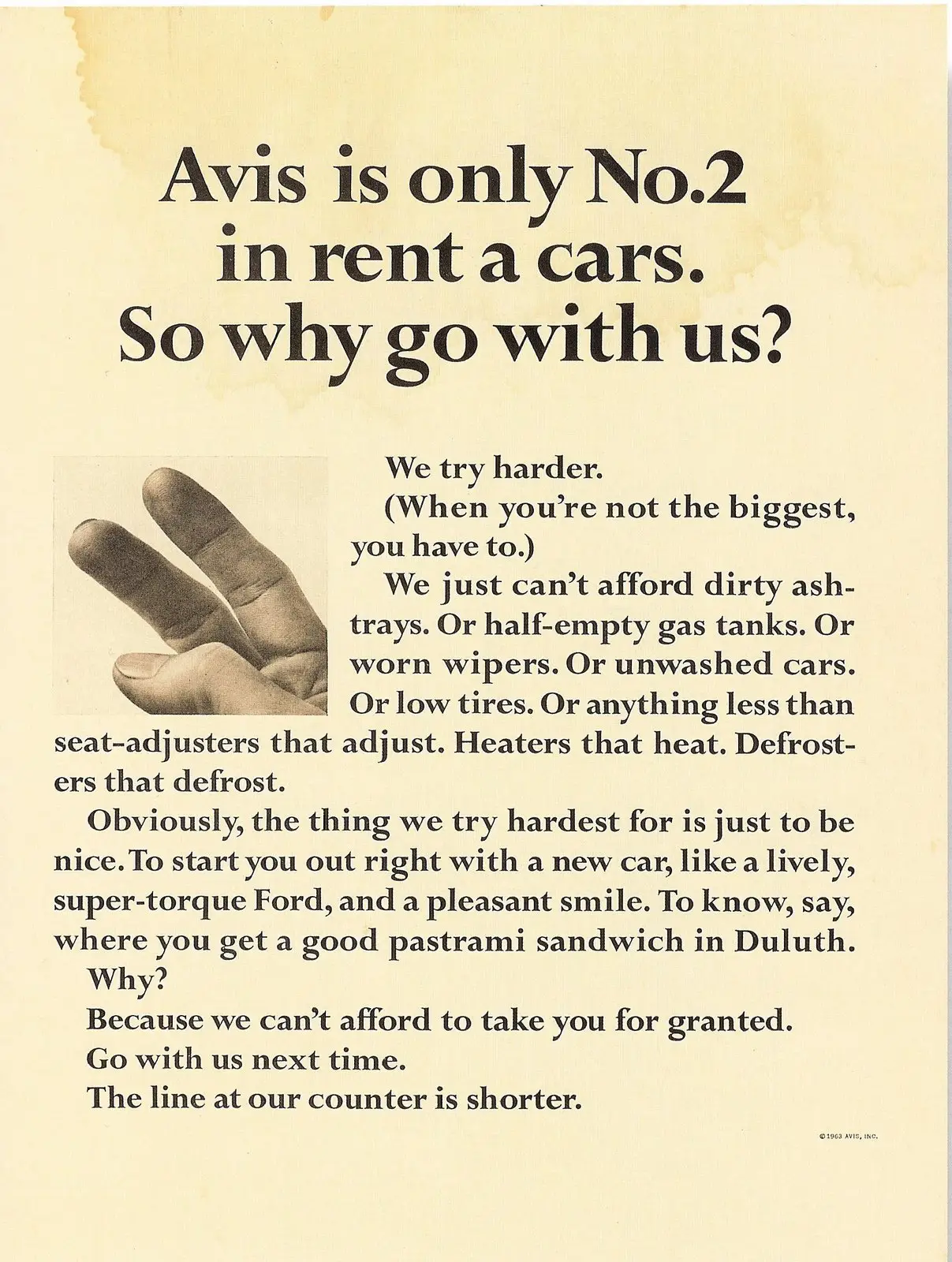A few years ago, Ryanair’s marketing team started doing something no other brand could even think of.
Roasting their own customers on social media.
Why?
Well, Ryanair has all the downsides of a low-cost airline.
No free food or drinks.
Uncomfortable seats with little legroom.
And random seat allocation where you can’t even sit with your partner unless you pay an extra fee.
So customers complain about the lack of services and additional fees on social media.
You know how other airlines reply to these posts.
A generic “Please send a DM and we’ll be happy to assist you.”
But Ryanair?
They are unapologetic.
They know people are not stupid.
So they don’t try to hide reality or evade these complaints with boring corporate replies.
They embrace their weaknesses.
And they troll customers who complain with comments like this:

This causes two things.
First, people love the audacity.
So they engage with Ryanair’s posts and share them with their friends.
It’s free advertising.
Even people who live in countries where Ryanair doesn’t operate get to know about the airline.
But the second one is more important.
Ryanair’s promise to its customers is to offer the cheapest fares possible.
Not to provide the best flight experience.
So Ryanair’s weaknesses and the way they embrace them on social media increase the perceived value of their brand.
I know, sounds contradictory.
But tiny legroom, random seat allocation, and roasting people who complain on social media?
If you’re looking for a cheap ticket to go somewhere, you’d know these freaks would have the cheapest tickets.
Their brand is like a cheap (and funny) uncle.
So by embracing flaws and making fun of them, Ryanair ironically increases the believability of their main promise.
It’s a value tradeoff.
You show what you lack.
But by doing that, you strengthen your unique value.

“What’s the catch?”
In his book Influence, Robert Cialdini mentions a simple method to persuade more easily.
When you mention a reason (any reason) after making a request, your chances of persuading the other person increase drastically
One example.
Never say “Can I borrow your phone?”
Always add a reason to increase your chances of getting a yes.
Like: “Can I borrow your phone? Because I have to call my mother.”
People always want to know why things happen.
And when there is a clear reason, they are more likely to accept what’s proposed.
Value tradeoffs work in a similar way.
They give a reason for customers to believe in the promise of a brand.
After seeing a strong claim (like Ryanair’s about prices), a question appears in customers’ minds.
“What’s the catch?”
If it’s a promotion in a store, you might think “Are they putting their low-quality stuff on sale?”
If it’s an investment opportunity somebody tells you: “Is this person trying to gain something from me?”
Brands who don’t answer these questions before they even pop up in customers’ minds have low believability.
When you see how Ryanair operates, you don’t even think “Are they cutting corners from safety?”
You see and feel how prices can be as low as a few euros.
Hence people easily believe Ryanair is the cheapest airline in Europe without worrying about if something is wrong with them.
“The catch” is they are obsessed with low-cost tickets and will do anything to achieve them.
Their CEO Michael O’ Leary confessed that they even considered charging for toilets, so they could reduce ticket prices for all passengers by 5%.
Now, the question comes.
How can you use value tradeoffs for your brand?
Two key points to use value tradeoffs for your brand:
1. Decide on your strength
Fastest, cheapest, coolest…
Most brands today claim to be the best in everything.
And guess what it does?
It kills the believability.
It’s like a lawyer claiming he is the best in divorce, real estate, and employment lawsuits.
Nobody would believe him.
But if he tells you he has 15 years of experience in real estate lawsuits and doesn’t handle anything else, he’d instantly become more credible in your eyes.
So your brand should do the same.
Think of your business’s strengths and choose one to focus on.
Yes, it’s tempting to make a claim in all the good stuff you offer.
But having one clear strength is more effective in making your brand distinct in a crowded market.
2. Embrace your weaknesses
In 1962, Avis made one of the most memorable ads ever.
You know what they said?
They acknowledged they were second in the market behind their competitor Hertz.
It was a bold move.
But they also claimed: “We are number 2, so we they try harder.”

The result?
Avis made its first profit after 13 years and gained a 7% market share.
“We try harder” even became the company’s tagline and didn’t change for 50+ years.
Avis took a weakness and used it to increase the believability of their promise — to provide the best service.
And it worked like magic.
So while all other brands try to hide their weaknesses or act like they don’t have any, do the opposite.
Embrace your weaknesses.
And yes, this will sometimes mean annoying a group of customers.
We talked about Ryanair.
Do you think anybody who prioritizes a pleasant flight experience flies with them?
Of course not.
But that’s what strong brands do.
They antagonize a group of potential customers.
So they can increase their perceived value for the target audience.
This quote from Jessica Walsh summarizes it perfectly:
“If no one hates it, no one really loves it.”
–
Enjoyed this article?
Then you’ll love the How Brands Win Newsletter.
Get the “5 Mental Models to Differentiate Your Business” guide when you join. It’s free.
